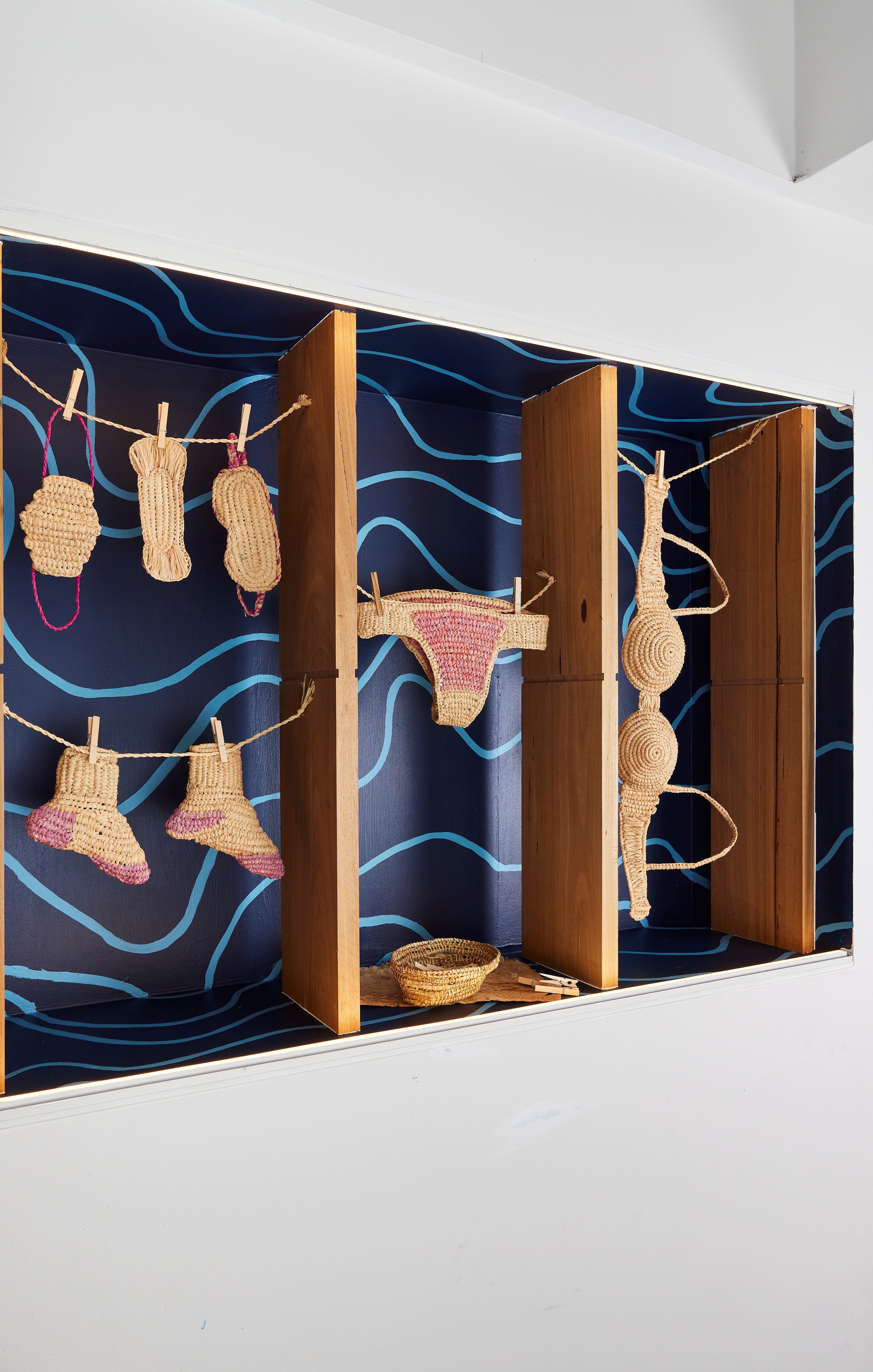
Craft Conversations
Madi Mercer, aka Ghostgum, explores personal, cultural, and political narratives through weaving. With more than a decade of experience using the technique, the Wadawurrung artist's intricate woven intimates are 'Hung out to Dry' in the Member's Vitrine Gallery in recognition and representation of " what it is to be a Blak woman, living within the system of colonial oppression." Alongside the exhibition, we spoke to Madi about her the techniques, materials and personal history that are at the heart of her creative practice.
Can you tell us about how your weaving practice has developed?
My weaving practice has always, and will always, be centered around keeping my Cultural traditions alive and strong, as well as using it as medicine, to heal myself, my family. The final form of my pieces, however, has never been constant, as they are all uniquely specific to the healing, I am doing at the time of making them, and are majority of the time more conceptually charged than functional. Although, I do often make simple things like bowls and earrings, it is still the purpose of why I am weaving that is the most important to me (although the intended use of the final product is important to me too). I have been connected and disconnected from weaving for over 10 years now, and since being reconnected again around 2 years ago now, the physical form of my weavings has become increasingly important to me, and I have been exploring the significance and purpose behind ordinary objects; how they represent so many implied, obvious, collective, and deeply personal meanings. My practice has moved to a space where I am actively incorporating my weaving into my artistic explorations, as its extremely liberating being able to recreate a collection of items that physically represent the underlying subjects I am weaving to move through.
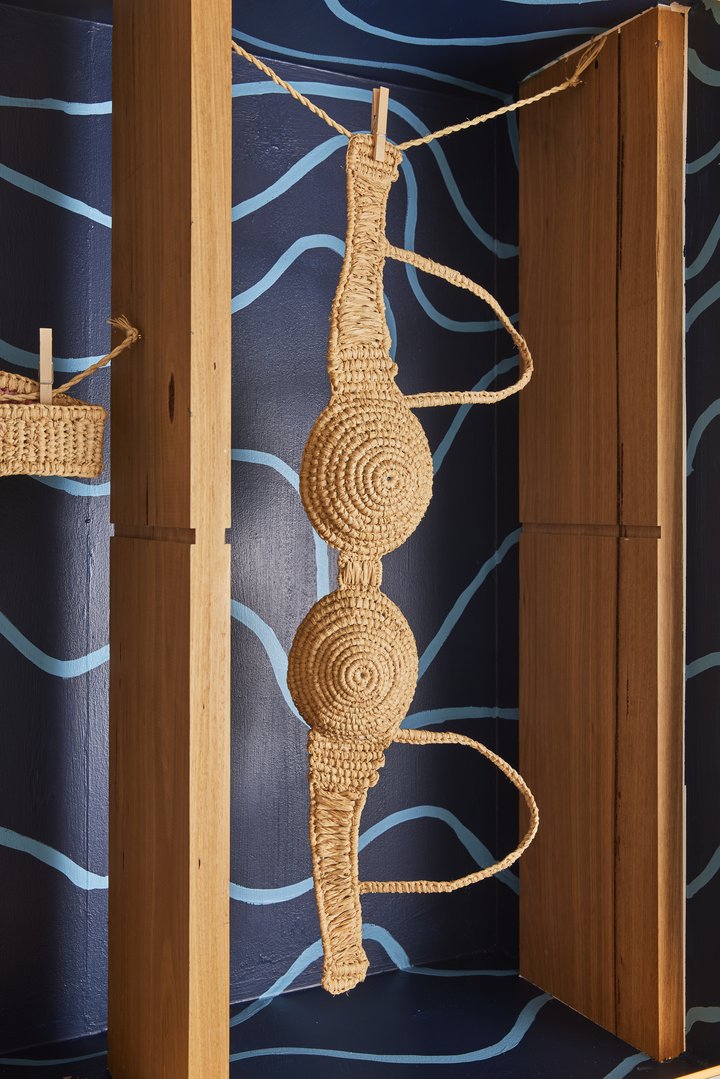
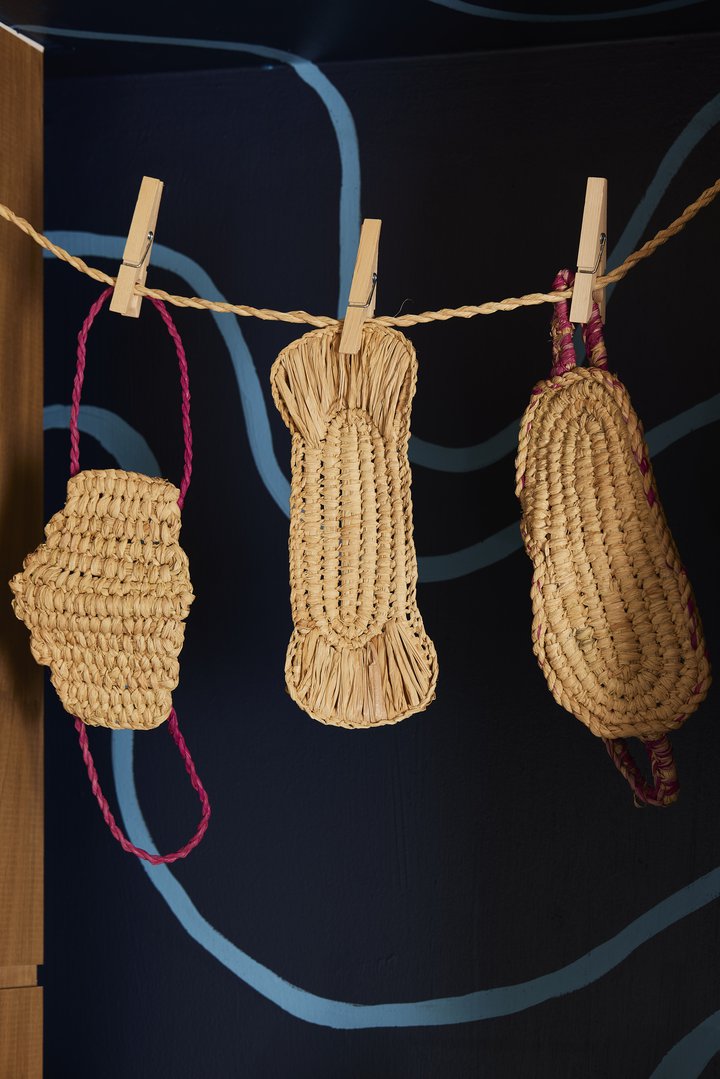
How has your family’s journey of moving from “house to house, Country to Country” influenced your creative practice?
A lot of the underlying things I work through are related to my experiences during those years. They weren’t necessarily negative experiences, but impactful nonetheless, so I’d say they influence my practice a lot, as I use weaving as a process to move through and find the roots of some of the issues I still face from those times. It has honestly strengthened my connection to weaving and Culture, as it’s pretty unique having formative experiences as a visitor on so many different and beautiful Countries that you are connected to, but not a part of.
"There is such a massive difference in the feeling of being a visitor on a sovereign Country, and being back home, and that is why I weave the way that I weave – as a continuation and celebration of the uniqueness of Wadawurrung Country, and Culture."
You have described the exhibition as speaking to both Women’s business and women’s work, can you speak to these two themes?
Women’s business is Culturally specific, women’s only Cultural practices and traditions such as weaving, yarning, dancing, community child minding etc – basically culturally safe spaces and practices for women and femme identifying individuals in community that strengthen us and allow us to support each other. Women's work is the historic misogynistic Colonial labor that has in the past been forced, and still continues to be heavily implied as part of the defining qualities of what it is to be a ‘woman’ or femme identifying individual in the colony – such as washing, cooking, cleaning, single child raising, etc. As well as this, it extends into the sexist gendered constructs of Art practices, such as craft being a “woman's art form” and looked down upon.
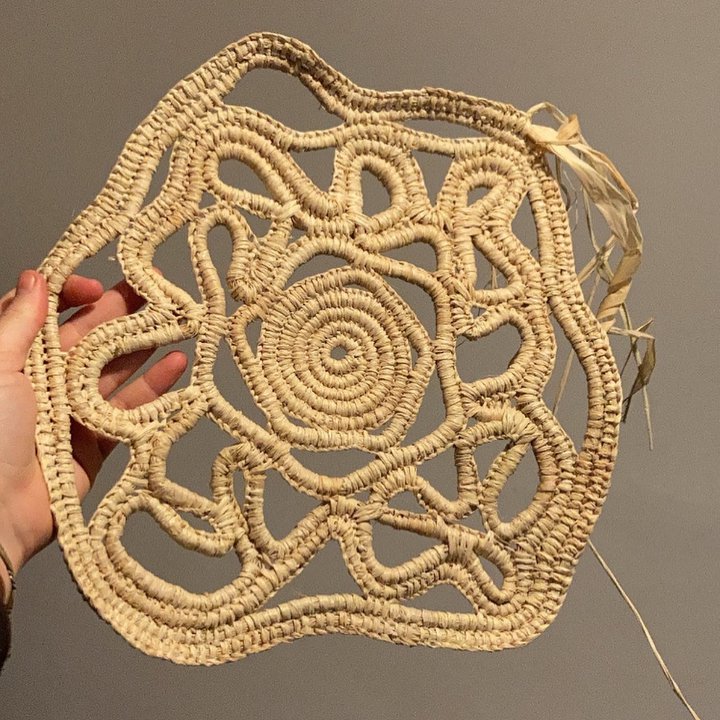

Raffia is a beautiful natural material – what guides your choice of material in your creative work?
I use raffia as my standard choice of material due to availability, colour range and accessibility. I have been suffering from a physical chronic condition for the last four years now that renders me immobile for periods of time, and I have found that raffia grass is extremely easy to work with and is within my budget as a young artist! I wanted to note as well that since starting to incorporate weaving into my (almost) everyday life, this condition has also become less impactful on me in so many ways. I also work with Flax grass when I am able to collect it, but as I am not living on my own Country I do not have the cultural guidance as of yet to be able to collect it, or permission, so I find that raffia is a great material for me at this stage but am always experimenting with new materials and fibres to extend my material practice!
Can you talk to the technical skill involved in creating your intricate “woven intimates”?
The basic stitch in the underlying weaving technique I use in all my pieces, is extremely simple in theory, but is very difficult to master. Each stitch has to have the same thickness, tension, and direction, and the filling that gives the stitches its body needs to stay constant or change size depending on the look and purpose of it. I have to know exactly how I want the final piece to look, and what type of weaving process I need to use for each section to get that look. With these pieces in particular, I am essentially building a sculpture, and need to be extremely precise with every stitch – like making rows shorter, or longer, taking rows off and reconnecting them to make holes or straps, and changing the direction to make a ribbed look rather than coiled. It all depends on how the final piece needs to look to be recognizable, or as accurate as possible.
A lot of the weaving within this collection of pieces were extremely experimental, and all of them took an extremely long time to make because they are all (for the most part) actually functional too! They are not only decorative but wearable pieces!
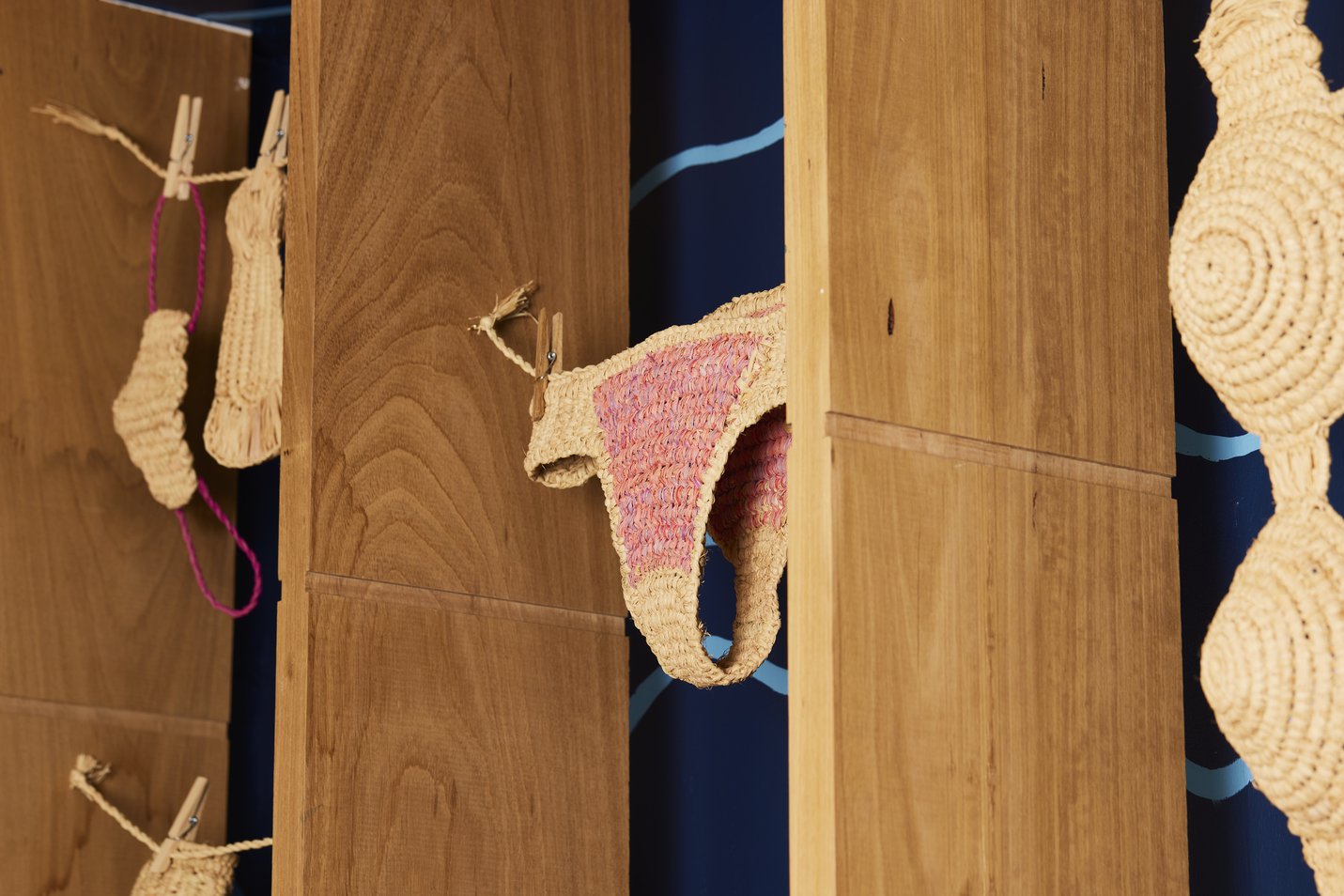
What’s next for you?
I am currently working towards holding my first market stall on NAIDOC week at which is very exciting, and am working on some more wearable pieces for that, and also have a puzzle collaboration which is coming out soon and cannot wait for! But I also have Graphic Design work constantly on the go, and one extremely exciting Graphic Design collaboration that I am really looking forward to! I am always looking for more exhibitions to be a part of, and collections to create, so I’m sure you will be seeing more of me.
Interviewed by Anni Hagberg, Curatorial and Programs Assistant.